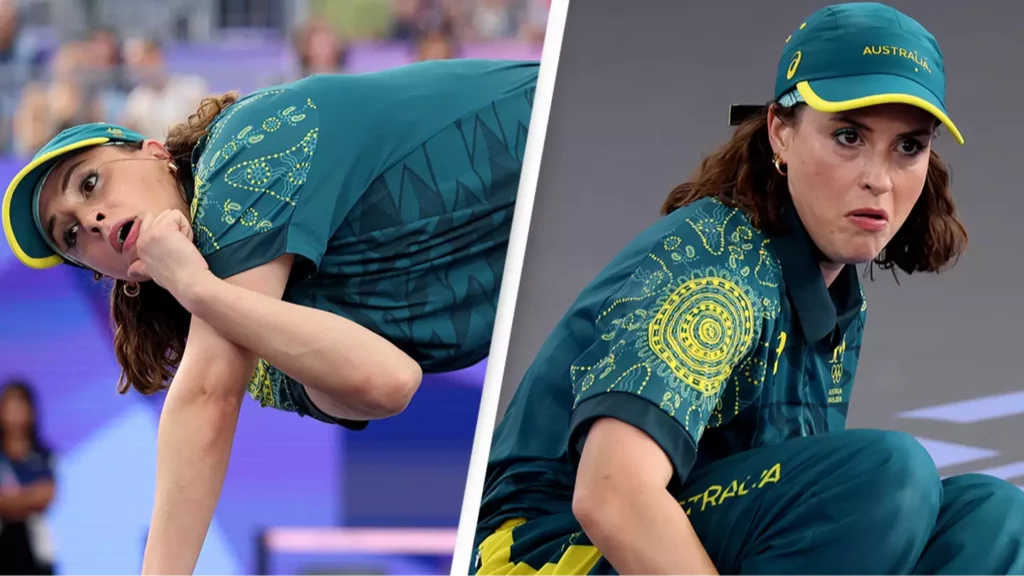Australian breakdancer Rachael Gunn, known by her stage name Raygun, has made headlines worldwide following her performance at the 2024 Paris Olympics. Gunn’s routine, which included creative moves like kangaroo hopping and slithering like a snake, failed to impress the judges, resulting in a score of zero across all three rounds. Despite the low score, her unique style has sparked a debate about originality and creativity in the sport.
Raygun’s family has spoken out in her defense, criticizing the judging criteria used at the Olympics. Andrew Free, her father-in-law, took to social media to express his frustration:
“It was a pretty stacked competition, and the judges were clearly looking for a certain style of breaking which is not Rachael’s. Although they are supposed to mark five different aspects with each having the same weighting, in my obviously biased opinion, they did not reward originality and musicality, so she was up against it.
Head judge Martin Gilian, known as MGbility, addressed the controversy by praising Raygun’s originality.
“Breaking is all about originality and bringing something new to the table and representing your country or region,”
He explained.
“This is exactly what Raygun was doing. She got inspired by her surroundings, which in this case, for example, was a kangaroo. We have five criteria in the competitive judging system, and her level was maybe not as high as the other competitors. But again, that doesn’t mean that she did really bad. She did her best. She won the Oceania qualifier.”
Speculation about Gunn’s motives has also emerged, with some suggesting her performance was a deliberate commentary on the institutionalization of breakdancing. Gunn, who holds a PhD in Cultural Studies and is a lecturer at Macquarie University, has previously written about the commercialization of breakdancing and its impact on local communities. Her academic background has led some to theorize that her Olympic performance was a form of protest against the rigid judging structures imposed on the sport.
Podcaster Hannah Berrelli commented,
“This whole episode is demonstrative of the supreme selfishness of woke identity politics studies. Her little stunt diminishes Australia on the world stage.” Similarly, CUNY sociology professor Devrim Yavuz speculated, “I am 98% convinced that this is a ‘breaching experiment’ that #Raygun did as part of an ethnography on gender and sports at the #OlympicGames breakdancing competition or performance art.”
Despite the criticism, Gunn has received support from figures like Anna Meares, Chef de Mission for the Australian team, who applauded her courage. Meares noted the historical challenges faced by female athletes and emphasized the importance of recognizing diverse expressions of artistry in sports.
Gunn herself remains steadfast in her commitment to creativity.
“All my moves are original. Creativity is really important to me. I go out there and I show my artistry. Sometimes it speaks to the judges and sometimes it doesn’t. I do my thing, and it represents art. That is what it is about.”
As the dust settles on her controversial Olympic debut, Raygun’s performance continues to fuel discussions about the balance between creativity and competition in breakdancing, raising questions about the future of the sport on the world stage.


